13 closed ambitious projects that could have changed the world (31 photos)
The history of science and technology carefully preserves many amazing ideas that were never brought to life. 
From giant flying aircraft carriers to unsinkable polar stations, each of these forgotten projects was a product of its time, reflecting the daring ambitions of mankind. Some of them turned out to be too complex to implement, others were too expensive or even dangerous. But what would our future be like if they had a chance to be implemented? These projects could have been a breakthrough, but they remained only on the pages of the drawing board. At least for now.
1. The atomic airplane - the plane of the future that never took off 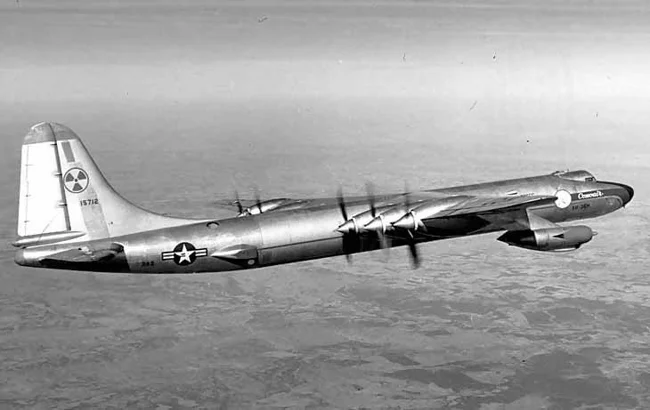
Convair NB-36H in flight
In the middle of the 20th century, during the technology race and atomic euphoria, engineers dreamed of creating a revolutionary aircraft - an atomic airplane, an airplane with a nuclear engine. The idea was very bold: to use the energy of nuclear fission for unprecedented flights lasting months without refueling.
The most famous project was the American Convair NB-36H - an experimental bomber of the 1950s. A miniature nuclear reactor was installed on board to test the effect of radiation on equipment and design. Fortunately, the reactor was not connected to the engines, but even test flights were worrisome: any failure could have catastrophic consequences. 
The most famous step in this direction in the USSR was the experimental Tu-119 aircraft, a modification of the Tu-95 strategic bomber. In 1961, a nuclear reactor was installed on board, which was isolated from the crew by lead screens. However, the reactor was not connected to the engines, but was used only to test radiation safety and the impact on equipment.
The projects were closed due to high risks and technical difficulties. However, the legend of the atomic plane remains a symbol of mankind's bold technological ambitions.
2. The Energia-Buran Project 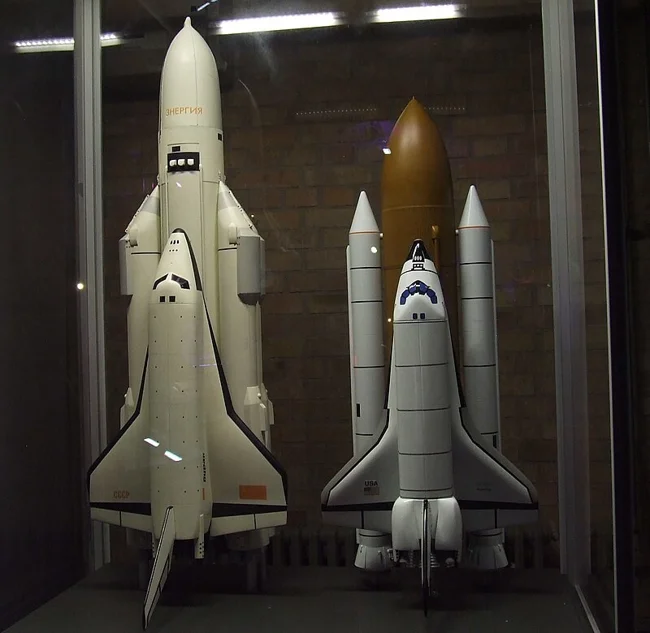
Comparison of Energia-Buran with the Space Shuttle
The Energia-Buran project was one of the most striking achievements of the Soviet space program. The development of a reusable space system began in the 1970s as a response to the American Space Shuttle program. The main goal was to create a ship capable of delivering cargo and crews into orbit and then returning to Earth for reuse.
Buran made its first and only flight on November 15, 1988. The flight was fully automatic - a unique achievement that confirmed the technical superiority of the USSR in the field of automation. The spacecraft successfully completed two orbits around the Earth and landed with high precision. 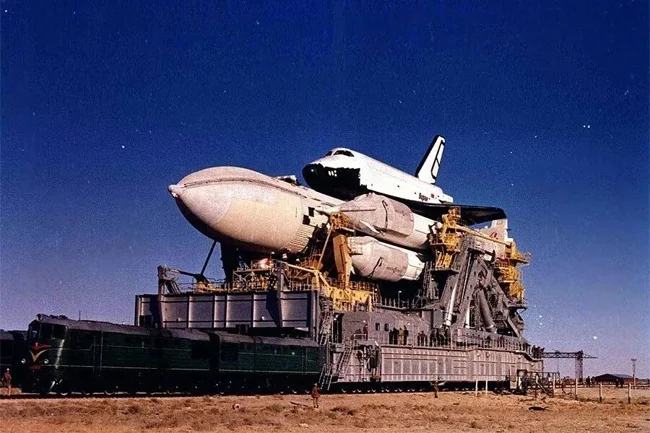
However, the economic difficulties of the late 1980s and the collapse of the USSR put an end to the project. Despite its closure, Buran remains a symbol of engineering genius and the large-scale ambitions of mankind in space exploration, and after the Columbia shuttle disaster in 2003, opinions were expressed about the need to revive the Buran program.
3. Lockheed CL-1201 - a giant flying aircraft carrier 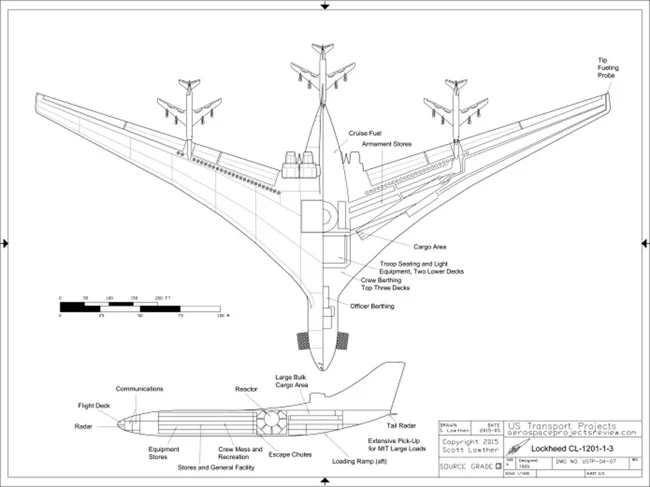
Lockheed CL-1201 drawings
In the 1970s, Lockheed proposed one of the most daring projects in the history of aviation - the CL-1201 - a flying aircraft carrier more than 170 meters long and with a wingspan of about 183 meters. This incredible project was a huge aircraft capable of carrying up to 74 fighters or other combat vehicles on board.
The CL-1201 was to be powered by a nuclear reactor to provide long-range flight without refueling, turning it into a true flying base. In theory, such an aircraft carrier could stay in the air for weeks, supporting military operations anywhere in the world. 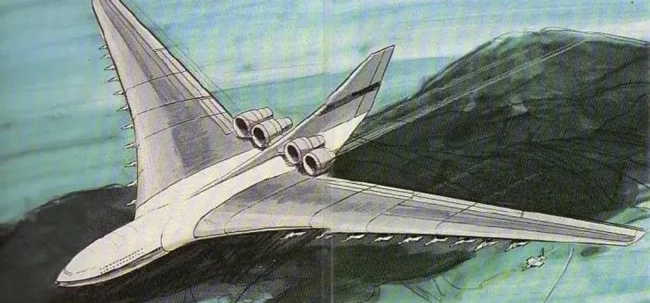
However, despite the precise drawings and calculations, the project remained on paper. The technical difficulties, high costs and risks associated with the use of nuclear technology on board made the CL-1201 unrealistic. Nevertheless, the project remains a symbol of the daring dreams of the Cold War era.
4. OASUIO – the unwoven Soviet Network 
Final version of the structure
In the 1960s, the USSR attempted to create its own National Automated System for Accounting and Processing of Information (NASAI), a large-scale project that could have become an analogue of the modern Internet. The idea was to unite all government agencies, enterprises, and research centers into a single network for the operational management of data, resources, and the country's economy.
The project was conceived as a tool for increasing the efficiency of the planned economy. Computers were supposed to automatically process huge amounts of data on production, distribution of goods, and financial flows. To do this, it was planned to build a network of computing centers linked by communication channels.
However, NASAI was never implemented. The project encountered a number of insurmountable obstacles:
Technical limitations. The Soviet electronics industry could not provide a sufficient number of reliable computers and other equipment.
Bureaucracy. Many officials saw automation as a threat to their power and sabotaged the idea.
Financial difficulties. In the economic crisis of the 1980s, the project lost priority funding.
Despite the failure, OASUI remains a symbol of the technological audacity of the USSR - an attempt to get ahead of its time and create a digital infrastructure in an era when most countries were just beginning to master computer technology. Perhaps, if the project had been completed, the history of global information technology would have been different.
5. Korobov's assault rifle - a promising weapon of the future, a thing of the past 
German Korobov
In the 1960s, Soviet designer German Korobov presented the world with an unusual project - the TKB-022 assault rifle, which could have become a serious competitor to the legendary AK. This experimental assault rifle was distinguished by its futuristic design and the use of unconventional solutions. 
The main feature of the TKB-022 was its bullpup layout (the magazine was located behind the trigger), which made the weapon compact, but powerful. The assault rifle weighed less than the AKM and demonstrated high shooting accuracy due to well-thought-out balancing and improved ergonomics. 
However, despite the innovations, the project never went beyond testing. The reasons were trivial: the complexity of production, insufficient reliability under extreme loads, and the conservatism of the military, who preferred proven solutions.
Today, the Korobov assault rifle is considered one of the most interesting forgotten projects of the Soviet weapons genius.
6. Grokhovsky's Polar Globe - a Forgotten Promising Project 
In the 1930s, Soviet engineer Pavel Grokhovsky proposed a revolutionary idea - a polar globe - a device capable of operating in extreme Arctic conditions, simply drifting in the water. This unusual project was a hybrid created to explore hard-to-reach polar territories. 
The balloon was supposed to be equipped with a system for autonomous crew survival. Its purpose was to conduct scientific research and, possibly, even provide a military presence in the Arctic.
However, the project never went beyond the drawing board. Technical difficulties, high cost, and the beginning of the Great Patriotic War put an end to the idea. Nevertheless, Grokhovsky's polar balloon remains a symbol of bold engineering solutions and the dream of conquering the harsh Arctic expanses.
7. Superconducting Super Collider (SSC) - an accelerator that could change everything 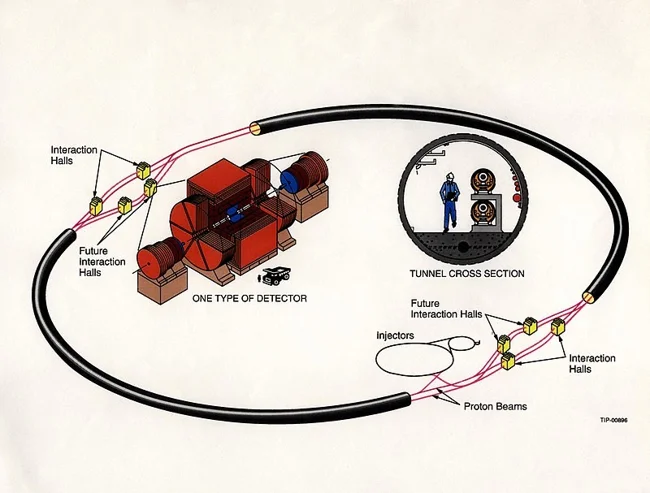
Scheme of the SSC accelerator complex
In the 1980s, the United States planned to build the world's largest particle accelerator - the Superconducting Super Collider (SSC). This incredibly grandiose project with a budget of about $11 billion was to become the pinnacle of particle physics. SSC was planned to be built in Texas and equipped with a ring tunnel 87 kilometers long - three times longer than the Large Hadron Collider. 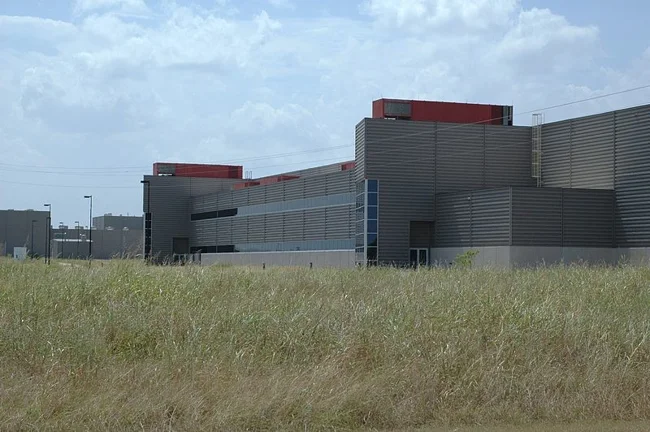
One of the buildings built for the SSC project
The accelerator could have explored the most fundamental questions of the Universe: the nature of dark matter, the origin of mass, and the structure of space-time. However, in 1993, the project was closed due to huge costs and funding cuts. At that time, about $2 billion had already been spent, and part of the tunnel remained abandoned in the Texas wilderness.
The closure of the SSC was a blow to the world of science. Many experts believe that if the project had been completed, it could have outpaced the LHC's discoveries, including the discovery of the Higgs boson, by several decades.
8. Lockheed SR-71 Blackbird - the plane that flew faster than a bullet 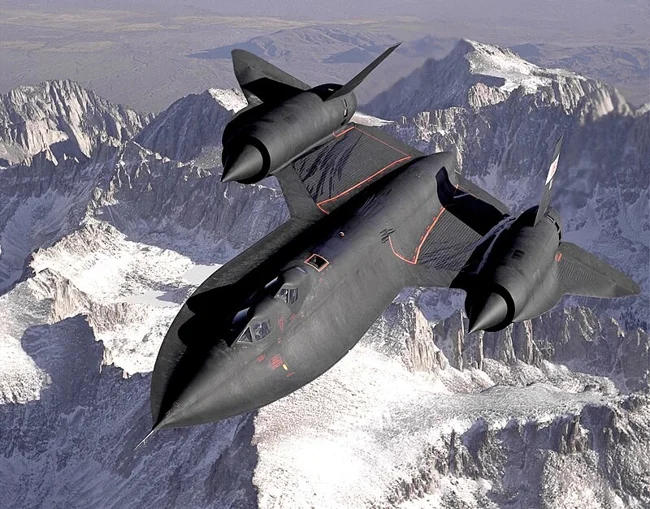
SR-71B Blackbird during a training flight
The Lockheed SR-71 Blackbird is an aviation legend, a spy plane that is still considered one of the fastest in history. Developed in the 1960s for the US Air Force, it could reach speeds of over 2,100 mph and altitudes of over 15,000 ft, while remaining undetectable by any air defense systems of the time. 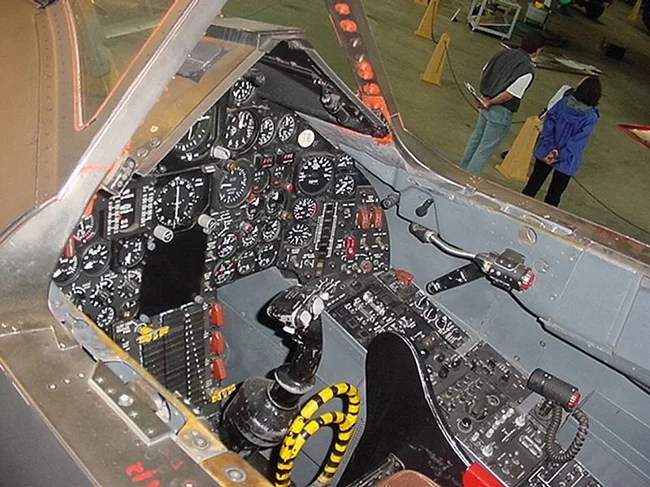
SR-71 Cockpit
The Blackbird was built from titanium to withstand the extreme temperatures encountered during hypersonic flight. Even its windshield heated up to 660°F (300°C) during flight. Over the course of its career, the SR-71 carried out hundreds of reconnaissance missions, photographing the Soviet Union, China, and other countries while remaining elusive. 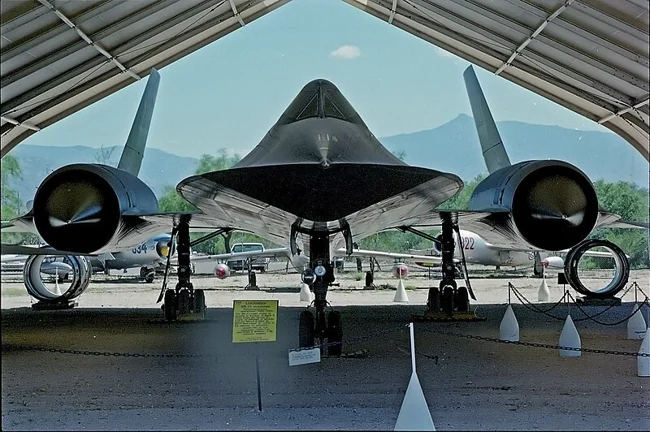
SR-71 at the Pima Air & Space Museum, Tucson, Arizona
Even though the Blackbird last flew in 1998, its records remain unbroken. The aircraft has become a symbol of technological excellence and a tangible reminder of how far human ingenuity can go.
9. Project Skylon - the spaceplane of the future 
Skylon is a large-scale ambitious British project of a single-stage space plane capable of delivering cargo and people into space without the use of traditional rockets. Its unique feature is the revolutionary SABRE (Synergetic Air-Breathing Rocket Engine), which combines the capabilities of an air-breathing engine and a rocket engine. 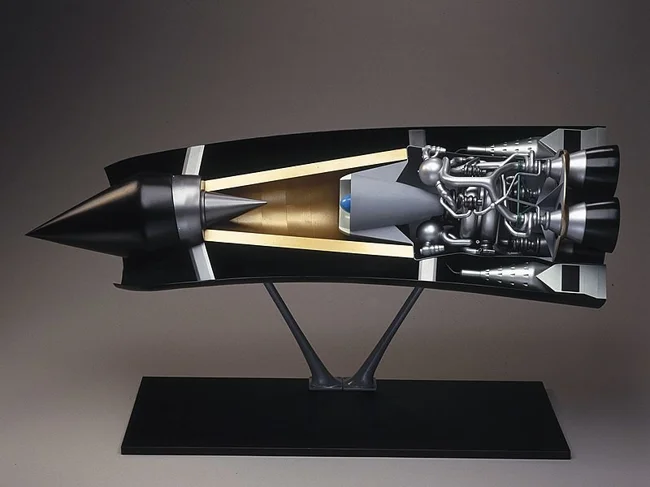
Engine Project
Thanks to this, Skylon can take off from a regular airfield, accelerate to hypersonic speeds in the atmosphere, and then go into space. The project promises to reduce the cost of space launches several times, making them more accessible for commercial missions and scientific research. 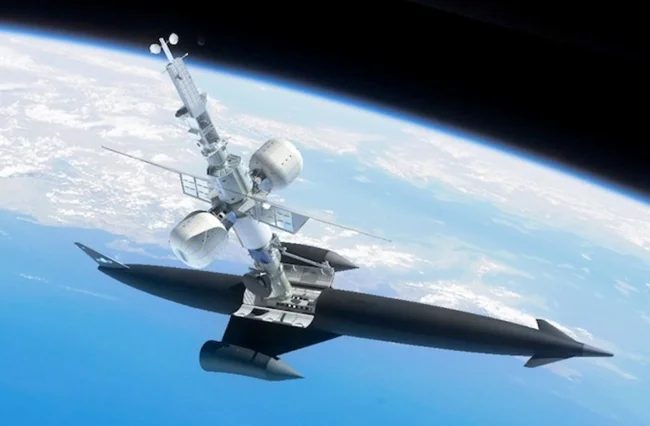
Skylon has attracted the attention of major space agencies and companies. However, on October 31, 2024, it was reported that the Skylon project was closed, as the British company Reaction Engines did not have the money for further development and implementation of the technology.
10. Project Concorde - a supersonic dream 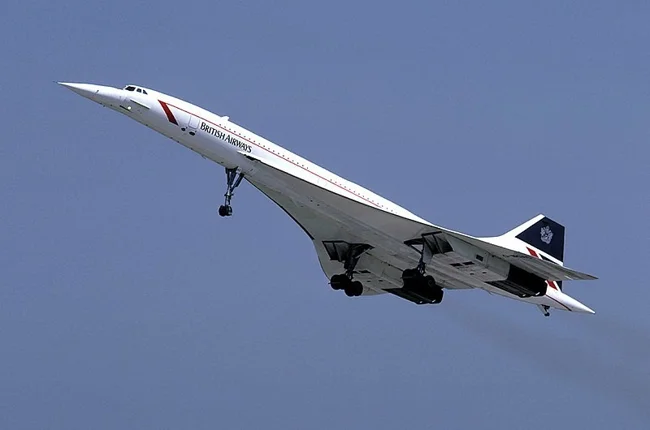
The Concorde is a legendary supersonic passenger aircraft that has become a symbol of technological progress in the 20th century. Developed jointly by British BAC and French Aerospatiale in the 1960s, it could fly at speeds of over 2,000 km/h, which made it possible to cover the distance between London and New York in just 3.5 hours. 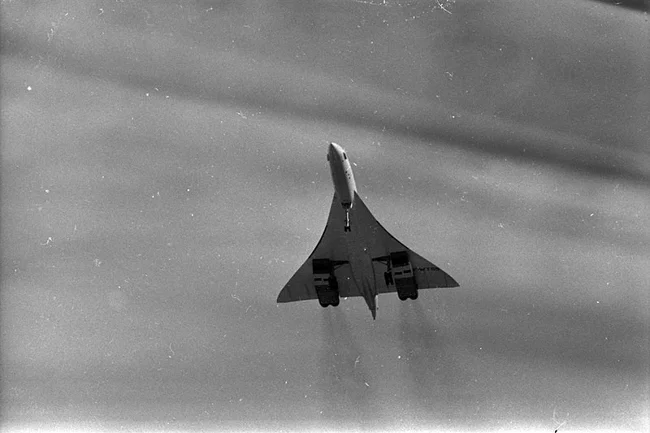
The first flight of the French prototype Concorde in Toulouse on March 2, 1969
However, Concorde was not only a technical marvel, but also the subject of controversy. Its maintenance was extremely expensive, and tickets were available only to a select few. The Paris disaster in 2000, economic difficulties and growing environmental concerns put an end to the project. Concorde's last flight took place in 2003. 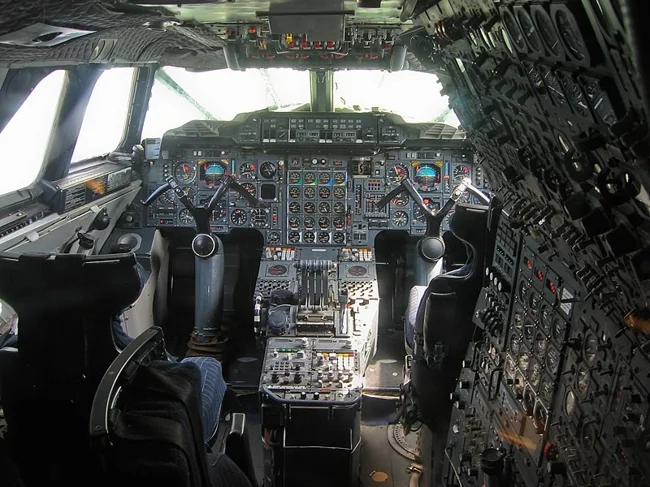
Cockpit
Today, this aircraft remains a symbol of humanity's bold ambitions and a reminder of how difficult it is to reconcile innovation with the realities of the world.
11. Su-47 "Berkut" - a fighter with an unusual wing 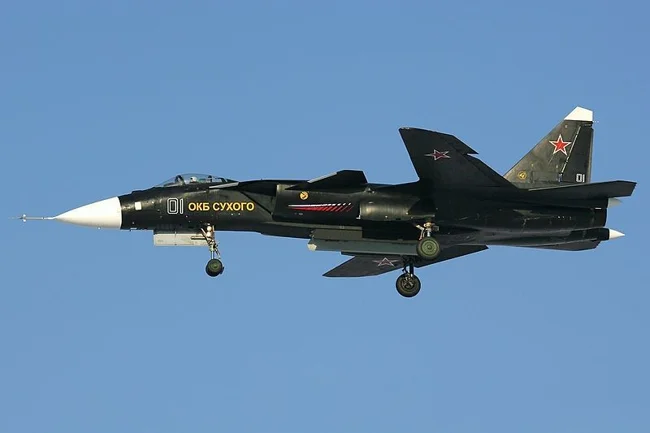
The Su-47 "Berkut" is an experimental fighter that attracted the attention of the whole world due to its unique design. The main feature of the aircraft was the forward-swept wing, which gave it a futuristic look. 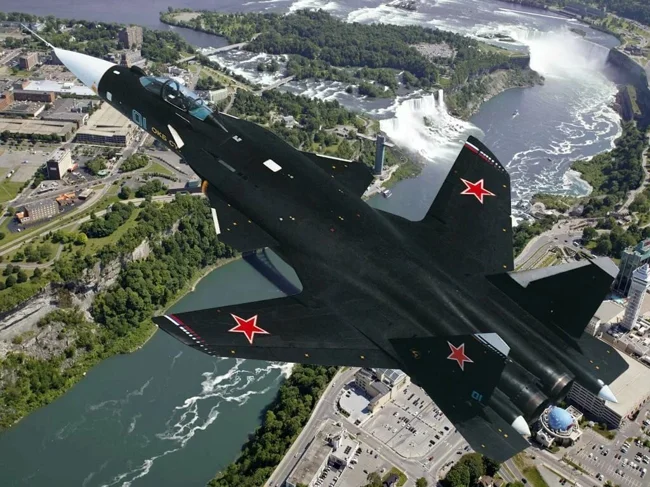
The forward-swept wing provided exceptional maneuverability, stability at low speeds, and high efficiency during takeoff and landing. However, the project faced serious technical difficulties: such wings required super-strong materials to withstand colossal loads.
Despite its impressive performance, the Su-47 remained an experimental project. The technologies developed for the Berkut later formed the basis for other fighters, such as the Su-57. Today, the Berkut is a reminder of the bold attempts to breakthrough in aviation science.
12. Lun - a winged sea monster 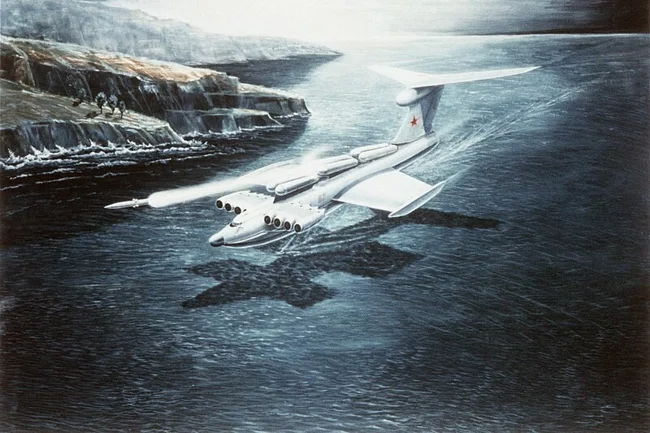
The Project 903 Lun ekranoplan rocket ship is a unique Soviet ekranoplan rocket ship that looked like a device from the most daring science fiction. This giant craft, nicknamed the Caspian Monster in the West, used the screen effect - an aerodynamic cushion that appears near the surface of the water - to reach speeds of up to 500 km/h while remaining a few meters above the water. 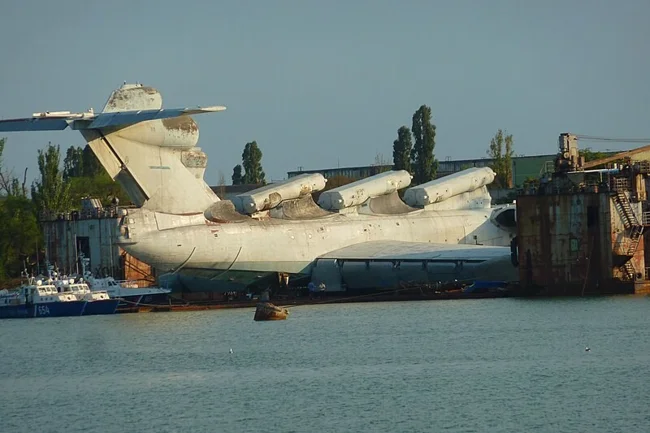
Lun Ekranoplan (Kaspiysk, 2010)
The Lun was equipped with six P-270 Moskit anti-ship missiles, making it a dangerous opponent for aircraft carrier groups. Its dimensions were impressive: 73 meters long, 44 meters wingspan, and takeoff weight of over 380 tons. Despite its size, it could maneuver quickly and remain undetected by enemy radar.
However, after the collapse of the USSR, the project was closed due to high costs and the complexity of maintenance. The only copy of the Lun remained on the pier in Kaspiysk. Nevertheless, this device still inspires admiration as an example of bold engineering solutions.
13. Orion - an explosive aircraft capable of reaching the stars 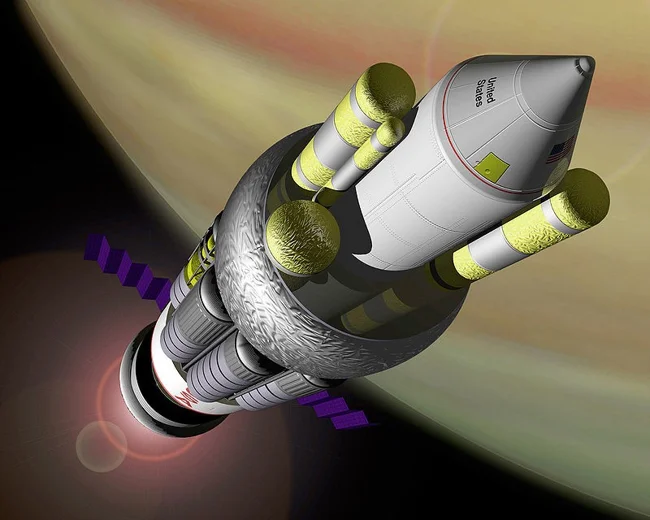
The Orion project is one of the boldest ideas in the history of space technology. Proposed in the 1950s by American scientists, this spacecraft was supposed to use a series of nuclear explosions to move through space. The principle was simple and shocking at the same time: atomic charges are dropped in the ship's path, which detonate, pushing the ship forward. 
A diagram of a directed nuclear charge, supposed to be used as fuel elements for the Orion
Theoretically, such a "explosive ship" could reach incredible speeds, allowing humanity to travel to the nearest stars or explore the distant planets of the Solar System in a matter of years. However, the project faced serious problems: environmental risks, international treaties banning nuclear tests in space, and technical difficulties put an end to this daring dream. 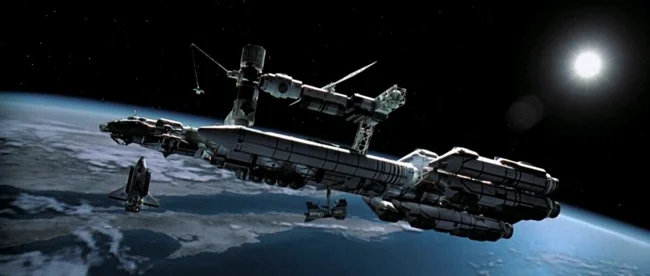
Still from the film "Deep Impact"
Although "Orion" was never built, it remains a symbol of boundless imagination and scientific courage. It is noteworthy that photon rockets were used in the works of the Strugatsky brothers, and the film "Deep Impact" (1998) shows a spacecraft using the Orion system as its main propulsion system, although it only vaguely resembles this engine in appearance. Perhaps the ideas of this project will find application in the future, when technology allows them to be made safe.
























